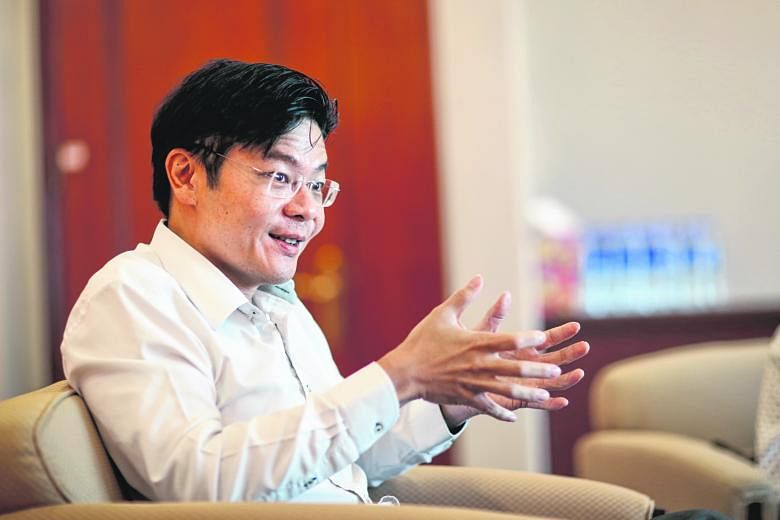It is one of the Government's most demanding portfolios but after one year in the job, National Development Minister Lawrence Wong remains upbeat about the possibilities it presents for shaping a future Singapore.
He told The Straits Times last week that the ministry has built on the work done in the preceding terms of government as well as expanded into new areas, including introducing Car-Free Sundays: "What we are hoping to achieve is a Singapore that's highly liveable, that's people-friendly and green, and provides a high-quality living environment wherever you are."
Mr Wong said there is far more to be done, citing three priority areas.
One is ensuring affordable and quality housing - and building communities. "That means thinking very hard about how we do infrastructure, urban design, and putting it all together to strengthen that sense of home and create a high-quality living environment."
The ministry is working on several pilots exploring ways of rejuvenating Housing Board towns, including adding green features in Yuhua, introducing smart-town services and processes in Punggol and walking and cycling options in Ang Mo Kio.
It is even more proactive in designing new towns as it can include many eco-friendly initiatives from the start, as seen in the master plan for Tengah unveiled by Mr Wong last month.
Another priority centres on urban transformation. This includes moving the ports in Tanjong Pagar and Pasir Panjang to Tuas, developing the second central business district in Jurong and rejuvenating Paya Lebar after the old Paya Lebar Airport moves out.
-
THREE PRIORITIES
-
1. Ensuring affordable and quality housing and building communities.
2. Urban transformation, which includes moving the ports in Tanjong Pagar and Pasir Panjang to Tuas, developing the second central business district in Jurong and rejuvenating Paya Lebar after the old airport moves out.
3. Push boundaries on creating a greener and better environment.
"These major long-term plans will allow us to build a more attractive Singapore, (with) better infrastructure that will also support the economy," said Mr Wong.
The ministry's crucial role in infrastructure planning allows it to weigh the benefits of pooling new industry clusters. This clustering strategy has worked well for Jurong Island and the Biopolis and Fusionopolis campuses in one-north.
Mr Wong said having that digital infrastructure is crucial as the Government is now looking at developing the digital economy. This means ensuring Singapore is a node for submarine cables, with infrastructure that is "plug and play ready, (which) companies and individuals can tap any time and anywhere".
"There are still gaps that we can fill and things we can do."
Some of the large urban transformation plans will allow the ministry to build new growth clusters. Once the ports move to Tuas, for example, there will be a site about three times bigger than Marina Bay to develop the Greater Southern Waterfront.
Jurong presents a new area to develop as a business centre, while Punggol North can also accommodate a new business cluster.
"We have many options. It's not as though we are so squeezed for land that we have no land for new clusters," said Mr Wong.
"Urban transformation affords us new and large parcels of land that allow us to think about how to support new growth engines."
The ministry will also continue to expand land options, such as by going underground or via reclamation.
Mr Wong's final priority is to push boundaries on creating a greener and better environment.
Singapore is well-placed not just to adapt ideas from other cities , but to try cutting-edge ones, he said.
"We have the ability to integrate across different government agencies, and the scale to do it for the whole city, much more than any other country in the world.
"We can really push the boundaries and frontiers to create something very special in Singapore."


